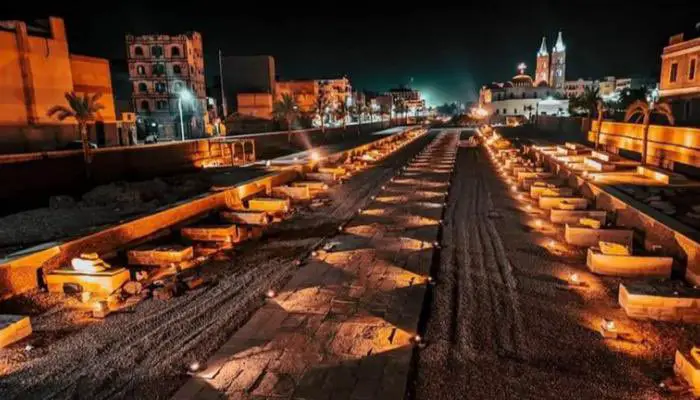The Road of Rams: The Ancient Pharaonic Pathway Revived

The Road of Rams is an ancient royal path that once connected the Luxor Temple and Karnak Temple, stretching for 2,700 meters. This pathway was used by ancient Egyptian kings for religious ceremonies and rituals.
Ancient Egyptian kings used this pathway for religious ceremonies and rituals. The road had statues of rams symbolizing the god Amun. The statues were found by archaeologist Dr. Zakaria Goneim in 1949, and subsequently, Dr. Muhammad Abdel Razek discovered more rams. In 2002, Dr. Mohammed Al-Sagheer confirmed that the road was 2.7 km long and decorated with 1200 rams.
The Egyptian government decided to revive the ancient Road of Rams despite it being buried and having buildings constructed on top of it. The project involved removing hundreds of buildings and restoring the ancient rams by Egyptian restorers.
The restoration work involved removing dirt and erosion factors that occurred over hundreds of years and restoring the original colors of the archaeological inscriptions engraved on the huge columns of the Karnak Temple.
The revived Road of Rams allows tourists to experience the pharaonic atmosphere by walking on this ancient pathway, which directly connects the Luxor Temple and Karnak Temple.
The restoration work was completed, and the opening ceremony was held in a majestic global legendary ceremony similar to the procession of the royal mummies.
The pharaonic procession was adorned with the traditional pharaonic outfits, while the girls wore pharaonic crowns, and the procession marched to the tunes of the famous “Hymn of Amun.”
The Road of Rams also played a significant role in the ancient Egyptian celebration, the Feast of the Pharaonic Obit.
This annual celebration held in Thebes (Luxor) included the transportation of the statues of the goddess Trinity of Thebes, composed of the god Amun, goddess Mut, and their son, the god Khonsu, during a large ceremonial procession.
The statues of the gods were moved from the Temple of Amun in Karnak to the Temple of Luxor, covering a distance of 2,700 metres.
The celebration also included the coronation of the king and the renewal of his legitimacy to rule the country.


